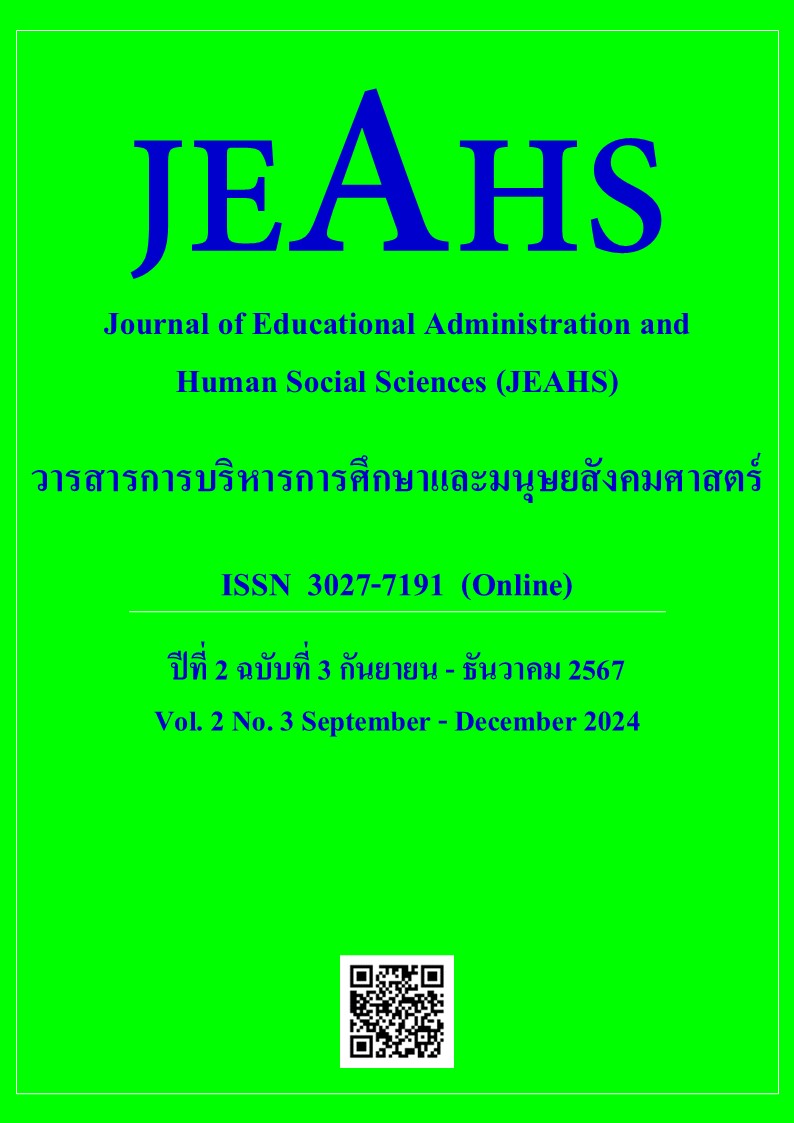ARTIFICIAL INTELLIGENCE FOR EDUCATIONAL ADMINISTRATION IN THE DIGITAL AGE
Main Article Content
Abstract
Artificial Intelligence (AI) is playing an increasingly crucial role in transforming educational management in the digital era, encompassing domains such as teaching and learning, student assessment, organizational administration, and educational services. With the ability to process vast amounts of data, analyze patterns, and make automated decisions, AI systems lead to enhanced efficiency, improved learning outcomes, and expanded educational opportunities on a broad scale. However, the adoption of AI in educational administration still faces several challenges, including infrastructure readiness, human resource development, risk management, and ethical considerations that must be addressed.
This article aims to review the literature on the application of AI in educational administration in the digital age, presenting 1) the applications of AI in digital age educational administration, 2) the challenges in adopting AI in education, and 3) approaches for driving the effective and responsible use of AI. The study employs a systematic literature review technique, synthesizing leading academic articles and research papers in the field that have undergone a rigorous screening process. The findings lead to policy recommendations for the development of action plans on the use of AI in educational institutions, covering strategy formulation, readiness development, change management, and the establishment of ethical governance mechanisms. By harnessing the potential of AI, the quality of education can be elevated, and learning equity can be fully realized.
Article Details

This work is licensed under a Creative Commons Attribution-NonCommercial-NoDerivatives 4.0 International License.
บทความที่ส่งมาขอรับการตีพิมพ์ในวารสารวารสารการบริหารการศึกษาและมนุษยสังคมศาสตร์ จะต้องไม่เคยตีพิมพ์หรืออยู่ระหว่างการพิจารณาจากผู้ทรงคุณวุฒิเพื่อตีพิมพ์ในวารสารอื่น รวมทั้งผู้เขียนจะต้องคำนึงถึงจริยธรรมการวิจัย ไม่ละเมิดหรือคัดลอกผลงานของผู้อื่นมาเป็นของตนเอง ซึ่งทางวารสารได้กำหนดความซ้ำของผลงานด้วยโปรแกรม CopyCat เว็บ Thaijo ในระดับ ไม่เกิน 25%
ในกรณีที่ บทความวิจัยมีกระบวนการวิจัยเกี่ยวข้องกับมนุษย์ ผู้นิพนธ์จะต้องส่งหลักฐานการรับรองจริยธรรมการวิจัยในมนุษย์มาประกอบการลงตีพิมพ์ด้วยจึงจะได้รับการพิจารณาลงตีพิมพ์ในวารสาร
ผู้เขียนบทความจะต้องปฏิบัติตามหลักเกณฑ์การเสนอบทความเพื่อตีพิมพ์ในวารสารการบริหารการศึกษาและมนุษยสังคมศาสตร์ รวมทั้งระบบการอ้างอิงต้องเป็นไปตามหลักเกณฑ์ของวารสารการบริหารการศึกษาและมนุษยสังคมศาสตร์ โดยรวมทั้งทัศนะและความคิดเห็นที่ปรากฏในบทความในวารสารการบริหารการศึกษาและมนุษยสังคมศาสตร์ ถือเป็นความรับผิดชอบของผู้เขียนบทความนั้น และไม่ถือเป็นทัศนะและความรับผิดชอบของกองบรรณาธิการวารสารการบริหารการศึกษาและมนุษยสังคมศาสตร์ และวารสารการบริหารการศึกษาและมนุษยสังคมศาสตร์
References
กระทรวงศึกษาธิการ. (2563). แผนปฏิบัติราชการระยะ 3 ปี (พ.ศ. 2563 - 2565) ของกระทรวงศึกษาธิการ. แหล่งที่มา https://www.obec.go.th/wp-content/uploads/2020/07/แผนปฏิบัติราชการระยะ-3-ปี-63-65.pdf สืบค้นเมื่อ 5 ธันวาคม 2567.
สำนักงานเลขาธิการสภาการศึกษา. (2560). แผนการศึกษาแห่งชาติ พ.ศ. 2560-2579. แหล่งที่มา http://backoffice.onec.go.th/uploaded/Outstand/2017-EdPlan60-79.pdf สืบค้นเมื่อ 5 ธันวาคม 2567.
Bajaj, R. & Sharma, V. (2018). Smart Education with artificial intelligence based determination of learning styles. Procedia Computer Science. 132. 834-842.
Bayne, S. (2015). Teacherbot: interventions in automated teaching. Teaching in Higher Education. 20(4). 455–467.
Chassignol, M., Khoroshavin, A., Klimova, A. & Bilyatdinova, A. (2018). Artificial Intelligence trends in education: a narrative overview. Procedia Computer Science. 136. 16–24.
Holmes, W. & Porayska-Pomsta, K. (2022). The Ethics of Artificial Intelligence in Education. From https://doi.org/10.4324/9780429329067 Retrieved December 5, 2024.
Holmes, W., Bialik, M. & Fadel, C. (2019). Artificial Intelligence in Education: Promises and Implications for Teaching and Learning. The Center for Curriculum Redesign.
HolonIQ. (2019). Global Education Technology Market to Reach $341B by 2025. From https://www.holoniq.com/notes/global-education-technology-market-reach-341b-2025/ Retrieved December 5, 2024.
Ifenthaler, D. & Yau, J. Y.-K. (2020). Utilising learning analytics to support study success in higher education: a systematic review. Educational Technology Research and Development. 68(4). 1961–1990.
Luckin, R., Holmes, W., Griffiths, M. & Forcier, L. B. (2016). Intelligence Unleashed: An Argument for AI in Education. London: Pearson.
Luo, Y., Zhang, J. & Luo, G. (2019). Unmanned Plant Control and Optimisation by Real-time Deep Neural Networks for Power Saving. Proceedings of the 2019 International Conference on Artificial Intelligence and Advanced Manufacturing, Dublin, Ireland.
Meier, Y., Xu, J., Atan, O. & Schaar, M. (2015). Personalized Grade Prediction: A Data Mining Approach. From https://doi.org/10.1109/ICDM.2015.54 Retrieved December 5, 2024.
Michos, K. & Davinia, H.-L. (2019). CIDA: A collective inquiry framework to study and support teachers as designers in technological environments. Computers & Education. 143. https://doi.org/10.1016/j.compedu.2019.103679
Nguyen, G., Dlugolinsky, S., Bobák, M., Tran, V., López García, Á., Heredia, I., Malík, P. & Hluchý, L. (2020). Machine Learning and Deep Learning frameworks and libraries for large-scale data mining: a survey. Artificial Intelligence Review. 52(1). 77–124.
Popenici, S., & Kerr, S. (2017). Exploring the impact of artificial intelligence on teaching and learning in higher education. Research and Practice in Technology Enhanced Learning. 12. 22.
Zawacki-Richter, O., Marín, V. I., Bond, M. & Gouverneur, F. (2019). Systematic review of research on artificial intelligence applications in higher education – where are the educators. International Journal of Educational Technology in Higher Education. 16(1). 39.


